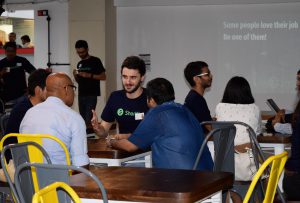We’re thrilled to announce our recent seed investment, an exciting milestone that will allow us to continue unlocking professional potential across India and East Africa.
When we started the fundraise process, we sought to partner with investors who share our passion for smarter hiring and who represent the global diversity of our business and team. The group we assembled includes institutional and individual investors from India, Kenya, and the US, each who bring deep expertise from their respective markets. We believe this gives us an incredibly strong foundation on which to grow, with insight and networks in all the places we want to be.
We want to thank each of our investors — University Ventures, Samir Shah of Sattva Capital, Zephyr Acorn, Farm Fund at Impact Assets, Bodley Group, and a handful of individuals who wish to remain private. We are humbled by their faith in us and their excitement about Shortlist’s potential. We have already benefited so much from their tough questions, thoughtful suggestions, and helpful pushes throughout the process — and we’re eager to continue getting their ideas going forward.
So what lies ahead?
A lot! We’re going to use the money we raised to take our data-driven talent screening product and technology to the next level. We’ve learned so much working with nearly 100 employers in the last 18 months, and want to build these insights into a brilliantly intuitive screening platform that will help growing businesses hire even better. We have a rich product roadmap encompassing new and improved assessments, a model for easy assessment customization for each job, and more features for both employers and job-seekers. The end result will be even easier and more targeted hiring without the pain, and with the promise of higher quality, better-fit candidates and employees.
We’re also starting to harness the power of our data. Each candidate who applies on our platform (and several hundred thousand candidates have engaged so far!) shares great detail about her professional experience and aspirations, while the competency-based assessments we deliver allow us to gauge skill, knowledge and potential beyond a CV. We are starting to use this data to better predict who an employer will select to interview, who they’ll hire, and who will actually be great in the job. We’re also starting to look at where candidates might be happiest. These predictive loops will get stronger and stronger as we increase our “hiring reps” with particular roles and particular employers.
It’s an exciting time for our business, and once again we thank our investors for their faith and support. Now: back to work!
Be sure to check out our new website, www.shortlist.net, to learn more, and follow us on Twitter (@Shortlisthires) for hiring tips and other updates!









































